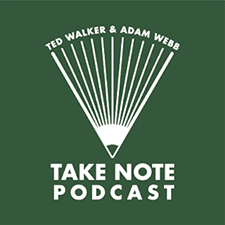The Physical World of Baseball

Back when I played baseball (all the way through college, haters), I deeply enjoyed the sensory experience of the game. The elements we would now call “analog” were deeply ingrained in the daily practice of baseball: the oil-saturated, heavy leather of a catcher’s mitt; sticky, pungent pine tar on the barrel of a bat; eye black with the odor of earthy paste. Each of these, and a thousand more, were inextricably linked to the equal if less sensorial pleasures of teamwork, camaraderie and competition.
Among baseball’s analog artifacts was the always beat-up, ever-dog-eared, probably dusty scorekeeper’s book. Every game, one of us was tabbed to keep score. Often a starting pitcher who had pitched the day before or a relief pitcher who was unlikely to pitch ever. The indelible image: the scorekeeper perched on an overturned sunflower seed bucket, balancing the over-large, floppy spiral-bound book on his lap, peering intently downward in order to record balls, strikes, hits and outs in the laughably small boxes that distinguish that marvel of stationery sadism. And this was before you could order a .38 mm gel pen in 10 seconds on Jet Pens.
The scorekeeper was the keeper of the only pen you were likely to see on the ballfield. In that Mars-esque realm of dirt and leather, even a modest blue Bic stood out like a refugee from the distant planet Classroom. You know your sport is in its own world when even a ballpoint pen looks out of place.
Baseball, more than many sports, prizes the analog connection for fans as well as players. Scorekeeping as a fan is, of course, still a big part of the experience, if more for ritual purposes than record-keeping. Tim at the Erasable podcast, whose giddiness about the upcoming season is a great addition to recent episodes, reminded me of the Eephus League design line by Bethany Heck. I followed Heck in my baseball blogging days but had fallen away from her work. The Halfliner scorebook looks awesome, though I cop to finding a free scorebook online and printing rather than springing for the fancier option. I haven’t scored a game in years, since my interest in pens, pencils and paper grew, so I’m giving myself a cheap reentry to see if it sticks. (In my days as a baseball blogger, we even sported a full Scorekeeping Week.)
When I was blogging about baseball regularly, I watched games with Moleskine in hand, transcribing the odd moments and emotional turning points in pen and pencil before taking to the laptop. It fell somewhere between scorekeeping and note-taking, and there was pleasure in the in-between, far superior to watching baseball with a laptop open.
It’s spring, and with the spring comes the thaw, and with the thaw one’s senses are reawakened to the physicality of the world. The genius of baseball is to coincide with this physical awakening. The result is that anticipation for the baseball season is a full-body experience. A perfect fit for analog enjoyment.
I’ve been taking my kids out to the baseball field a block from us in the longer evenings. They don’t care much for the rules, but when I scream at them to “run run run!” they seem to get it, especially when chased madly. I am happy for them to get a sense of, to take note of, baseball's physical possibilities. The treeless expanse, the path from one base to the next, the sense of running on a line for a purpose, the odd feeling of standing on a pitcher's mound or in the batter's box. The gloves and bats and bats are still imaginary, but very real is the sense of connection to the physical world. The baseball world.
(If I sound optimistic about baseball, it helps that my team won the World Series last year.)
- Ted Walker


